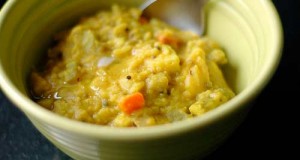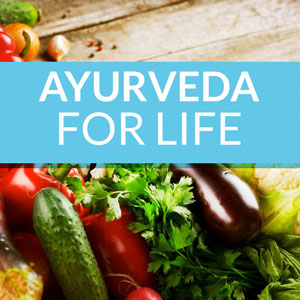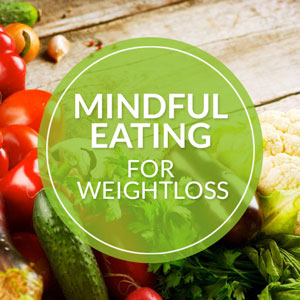A Simple Answer To Most Digestive Problems
Simplicity is key to many effective concepts. Digestion is not different.
 For a long time I have been noticing that not everything that I eat makes me feel equally well. The more I pay attention to my stomach before and after food, the more information my body provides. While I am still learning to decipher my body’s feedback, one finding keeps emerging more often than others: THE SIMPLER THE DISH, THE LESS ENERGY IT REQUIRES TO DIGEST. Which means, I have more energy left to do other things like write, think, teach, do yoga, and just enjoy my life.
For a long time I have been noticing that not everything that I eat makes me feel equally well. The more I pay attention to my stomach before and after food, the more information my body provides. While I am still learning to decipher my body’s feedback, one finding keeps emerging more often than others: THE SIMPLER THE DISH, THE LESS ENERGY IT REQUIRES TO DIGEST. Which means, I have more energy left to do other things like write, think, teach, do yoga, and just enjoy my life.
Hard to digest food combinations: disease of overabundance
You may eat a vegan diet and still get gas, or feel bloated after a raw dessert tasting. Food allergies aside, improper food combining can be one of the major reasons behind belly troubles. Someone who voluntarily eliminates certain food groups from their diet (for example, no dairy, no gluten, no flesh, no eggs) is less likely to confuse digestion with improper food combinations. Those strong-willed people have fewer food groups to combine in their meal. They have less choice. It makes their diet more simple and therefore more digestion friendly.
However, you don’t have to eliminate entire food groups to keep your belly happy. Also going gluten free or vegan doesn’t necessarily mean that you don’t have to look into food combining, especially if you want to increase your energy levels.
If you think about it, our ancestors were not very likely to combine multiple food groups in one meal. If they found berries, they ate berries. If they were lucky to hunt something down, they had a feast of meat. But I can’t imagine ancient people cooking side dishes, dressings, and desserts in a cave kitchen. Our many times over grand-fathers and grand-mothers probably ate mostly simple mono meals consisting of 2-4 ingredients at a time.
Food combining can be applied to any diet to reduce postmeal digestive un-ease, improve elimination, resolve skin issues, and to increase energy levels. Before we dive into some of the main food combining rules, let me explain the energy and food connection.
Energy and Digestion Connection
We have a finite amount of energy for any given day. There are several major things that go into the energy equation: sleep, emotions, movement, mental activity, and of course food.
- Sleep gives us energy.
- Movement can be energizing due to increase in blood circulation and oxygen but in the end it requires energy. Different types of exercise can also be broken down into depleting and nourishing.
- Emotions have a very strong connection to energy levels. Positive emotions like joy are energizing while negative emotions can deplete energy reserves.
- Mental activity requires quite a bit of energy. Clarity and creativity are not very common mental states in exhausted people.
- Food is a double-edged sword. Easy-to-digest food will provide energy. Hard to digest or nutrient poor food will require more energy to break down. Some food combinations will even have a negative net gain of energy. A white bagel with cream cheese requires a lot of energy to digest, probably way more than it will provide to the body. Berries on the other hand is a certain quick energy gain.
One of the ways to make sure that you get a positive net gain of energy from food is to eat nutrient-dense foods. Another way is to make sure that those nutrients can be easily absorbed into your body by keeping food combinations simple.
 Food combination theories can be quite complicated to understand, and almost impossible to remember right away. However, there is one key rule that will save you a lot of memorizing: Simplicity. The fewer ingredients the less different enzymes you need to digest food and the less likely the food will get stuck in our body fermenting. Simple meals are easier because they require less resources to break down and turn into nutrients.
Food combination theories can be quite complicated to understand, and almost impossible to remember right away. However, there is one key rule that will save you a lot of memorizing: Simplicity. The fewer ingredients the less different enzymes you need to digest food and the less likely the food will get stuck in our body fermenting. Simple meals are easier because they require less resources to break down and turn into nutrients.
In general there are 3 BIG food combining rules:
- Dairy should not be combined with pretty much anything besides greens and non starchy vegetables. Baked goat cheese on veggies or salads is okay but no pizza, cream-based pasta sauces, dairy-based chowders are not recommended. When it comes to yogurt, add vanilla bean, honey but no jams or fruits.
- Fruit should not be combined with anything because it digests a lot faster than most other things. Best to be eaten at least 20 mins before anything else. Grains with fruit, fruit and eggs, fruit and nuts, fruit after a meal are among the infamous no-no’s. The only exception is dates in milk or dried fruit boiled together with grains such as in oatmeal.
- Have one concentrated protein per meal. This one is pretty simple: no fish and chicken, meat and shrimp, eggs and milk, cheese and beans on one plate.
Another rule is keeping portions manageable. If you know that you will be eating a complicated meal consisting of hard-to-digest products, keep the amount small. It is easier to deal with a small problem than a large one.
The strictness level with which you choose to follow food combing rules depends on your current health, physical activity, stress level, the efficiency of your digestive system, and most of all, your goals.
Sticking to easy-to-digest food combinations is done primarily to reduce digestive un-ease and to reduce the energy consumption on digestion processes and therefore increase the energy resources of the body left to do other things besides dealing with a grumbling tummy. When you need energy to heal and recover, food combining is more important than during the times when you feel rested and healthy.
Have you tried food combining? What was your experience? Share in the comments below!











